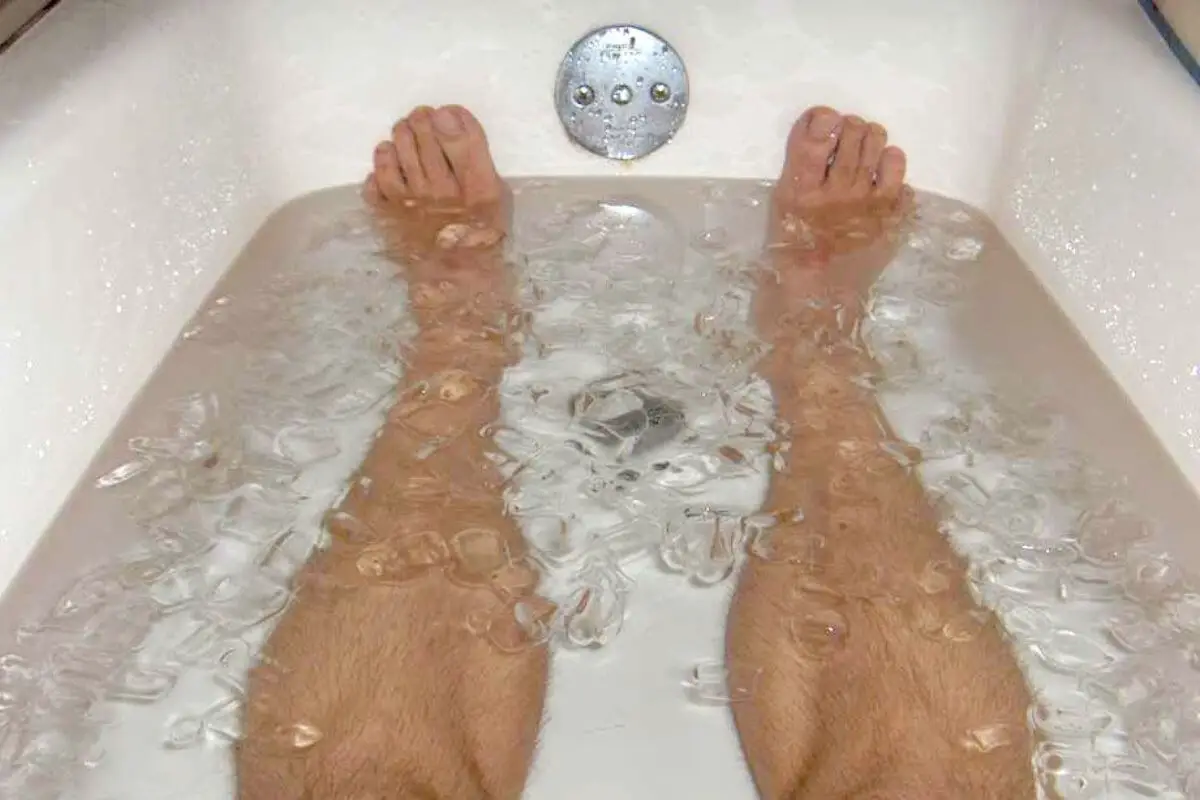Introduction
In the realm of recovery strategies for sore muscles and injuries, two methods have gained significant attention: ice baths and ice packs. Both techniques are widely used, but they serve different purposes and have distinct benefits. In this article, we will explore the differences between ice baths and ice packs, helping you understand which one is better suited for your specific needs.
What is an Ice Bath?
An ice bath is a form of cold therapy where an individual immerses their entire body or a specific part in cold water, typically at a temperature between 50°F and 59°F (10°C to 15°C). This practice has been popular among athletes and individuals seeking swift muscle recovery.
The Science Behind Ice Baths
Ice baths work by causing vasoconstriction, narrowing the blood vessels, which helps reduce inflammation and soreness. When you immerse your body in cold water, the cold temperatures constrict the blood vessels, limiting the blood flow to the area. This constriction reduces swelling and inflammation.
Benefits of Ice Baths
Rapid Muscle Recovery
One of the primary benefits of ice baths is the rapid recovery they offer to athletes and fitness enthusiasts. The vasoconstriction effect not only reduces inflammation but also aids in the removal of waste products produced during intense physical activity.
Reducing Inflammation
Ice baths are particularly effective in managing inflammation caused by sports injuries or intense workouts. The cold temperatures work as a natural anti-inflammatory, helping athletes recover more quickly.
Drawbacks of Ice Baths
Discomfort and Cold Shock
Ice baths can be uncomfortable, especially when you first step in. The initial shock of cold water can be challenging to endure.
Time-Consuming
Additionally, ice baths are time-consuming. It may take 10 to 20 minutes for the therapeutic effects to occur fully, which may not be convenient for everyone.
What is an Ice Pack?
An ice pack, on the other hand, is a compact, portable, and easy-to-use cooling device. It typically consists of a gel-filled pouch that can be frozen and applied directly to the skin.

How Do Ice Packs Function?
Ice packs function by providing targeted cooling to specific areas of the body. When applied to an injured or sore area, they reduce blood flow, decreasing inflammation and offering pain relief.
Advantages of Ice Packs
Targeted Relief
One of the primary advantages of ice packs is their ability to provide targeted relief. They are perfect for treating localized injuries or pain.
Convenient Application
Ice packs are user-friendly and can be applied with ease. They don’t require any special equipment or preparation.
Limitations of Ice Packs
Limited Coverage
While ice packs are excellent for targeting specific areas, they are not suitable for full-body recovery or large muscle groups.
Less Intense Cooling
Compared to ice baths, ice packs provide milder cooling effects, which may not be as effective for extreme muscle soreness.
Choosing the Right Method
When deciding between ice baths and ice packs, several factors should be considered, such as the type of injury, personal preferences, and the desired outcomes.
When to Use Ice Baths
Ice baths are ideal for athletes or individuals who engage in high-intensity workouts and need full-body recovery. They are particularly effective for reducing muscle soreness and inflammation after intense physical activity.
When to Opt for Ice Packs
Ice packs are best suited for targeted pain relief, such as treating minor injuries, swelling, or soreness in specific areas. They are a quick and convenient option for immediate relief.
Precautions and Safety Tips
When using ice baths or ice packs, it’s essential to follow safety guidelines. To avoid frostbite, always monitor the duration of application and maintain a barrier, such as a towel, between the skin and the cold source.
The Versatility of Ice Packs
Ice packs have a broad range of applications, from first aid at home to assisting athletes on the field. Their versatility makes them an essential part of any first aid kit.
The Importance of Consultation
Before choosing between ice baths and ice packs, it’s crucial to seek professional advice, especially if you have an underlying medical condition or injury that requires specialized care.
Conclusion
In the ongoing debate of ice bath vs. ice pack, the choice ultimately comes down to your specific needs. Ice baths offer full-body recovery and rapid relief for muscle soreness, while ice packs provide targeted relief for localized pain and injuries. To make the best decision, consider the type of injury, your comfort level, and the desired outcomes. Always consult a healthcare professional for personalized advice.
FAQs
Are ice baths or ice packs better for reducing muscle soreness after an intense workout?
It depends on your preference. Ice baths provide full-body recovery, while ice packs offer targeted relief.
How long should I stay in an ice bath to experience the benefits?
Typically, 10 to 20 minutes is recommended, but you should listen to your body and adjust the duration accordingly.
Can ice packs be reused, and how do I store them?
Yes, ice packs are reusable. To store them, place them in the freezer in a sealed plastic bag.
Are there any risks associated with using ice baths or ice packs?
Frostbite is a potential risk, so it’s essential to follow safety guidelines and avoid prolonged exposure.
Can I use both ice baths and ice packs for recovery?
Yes, you can combine these methods for a comprehensive recovery strategy. Use ice baths when needed for full-body relief and ice packs for localized pain or injuries.



